Is raw feeding for dogs worth it? Well, the better question would be, “is raw feeding for dogs worth it for me and my dog?” There are dogs who truly thrive on a raw food diet after struggling with commercial foods. For those dogs and their owners, I would say yes, raw feeding for dogs is worth it. But, that does not mean raw feeding for dogs is worth it for everyone, and the benefits, in my opinion, have been greatly exaggeration.
While misinformation is ubiquitous these days, the overexaggerated health benefits of raw dog food (and the overexaggerated conerns about kibble) are especially problematic to me because of the guilt it places on pet parents. Feeding raw is expensive. It requires extra time. Sourcing can be difficult, depending on where you live. And, there are very real contamination concerns, especially if you live with other pets, children, or immunocompromised adults. These factors mean that raw feeding for dogs is an option available only to those with the time, money, geographic location, and health to do so.
This post is about busting some of those myths and showing that raw is not the only option for a healthy dog. We fed our dogs raw for over one year. Yes, they did great. No, they did not get sick other than the occasional runny poop. But, we decided to switch back to kibble because it was incredibly expensive, time consuming, inflexible, and the risk of an unbalanced diet or contamination was always present. In the end, we realized a raw food diet was simply not worth it for our dogs.
Raw Feeding for Dogs MYTHS
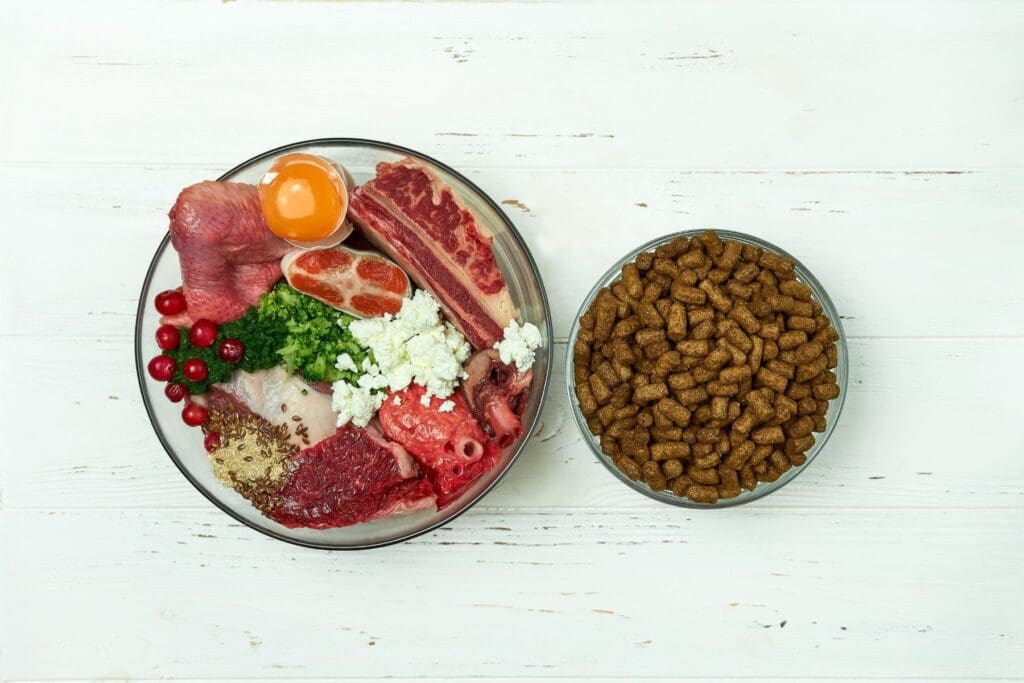
First of all, I want to dispel a few myths that I have seen perpetuated. These myths are what motivated me to switch to a raw food diet in the first place. I have since learned that these thoughts are not true, or are at least very misleading.
1. Kibble diets are bad for dogs.
Yes, poor quality kibble exists. That does not meant ALL kibble is bad. I often hear kibble equated to TV dinners or McDonald’s, aka “junk food.” But, this is actually a false analogy fallacy that assumes because kibble is pre-packaged and convenient, like a TV dinner, it must be equally as unhealthy. In truth, most (all?) TV dinners are not fully balanced meals; they don’t have all the nutrients humans need in the recommended daily allowences. Probably because TV dinners were not intended to be eaten as the ONLY meal.
A good quality kibble, on the other hand, should be made or approved by a qualified veterinarian nutritionist. This ensures it contains all the nutrients your dog needs, in the quantities and ratios they need them. Poor quality kibbles can have added ingredients, like food colorings and other fillers, but the higher quality stuff will not.
Does this make kibble as nutritiously dense as fresh, whold foods? Not necessarily. But, does that automatically mean kibble is trash food? Absolutely not.
2. Dogs’ digestive tracts were designed to kill food pathogens.
Contamination is actually a huge concern, especially since raw dog food may help spread multi-drug resistant bacteria. The fact is, there are numerous scientific studies that show dogs (raw fed and otherwise) passing salmonella and other pathogens through their stool, which poses a risk to both humans and other animals. Plus, dogs themselves can definitely get sick from these illnesses.
To compound this issue, there are a variety of studies piling up that indicate a high rate of antibiotic-resistant contamination of grocery store meat, including convential, antibiotic-free, and organic meats (see this 2018 study on antibiotic resistant E. coli in grocery store poultry or this 2018 analysis by nonprofit Environmental Working Group of 47,000 federal government lab tests of bacteria on supermarket meat). For humans, this is less of a concern if you are properly cooking your meat. This is not true for the dog that consumes this meat raw. That means raw feeding dogs could be a contributing factor to the spread of these antibiotic resistant bacterias, both to humans and out into the environment.
3. Raw food is healthier for dogs.
While I agree fresh foods can provide more nutritients that are usually more bioavailable, that doesn’t mean feeding your dog a raw food diet is healthier than kibble. There are other ways to incorporate fresh nutrients and antioxidants into your dog’s diet. You could try a gently cooked diet, or even add a variety of fresh foods to your dog’s kibble. The point is, there are lots of variables that need to be taken into account when determining what is “healthiest” for your dog, including your dog’s individual needs.
Furthermore, raw dog food can cause a myriad of health issues including pancreatitis, diarrhea, and food-borne illnesses like salmonella. Edible bones can pose a choking hazard or create a blockage in your dog’s intestines. Finally, it is very easy to not provide a properly balanced diet. This results in nutritional deficiencies that can pose a serious health risk to your dog.
4. Feeding your dog raw is cheaper.
There is no way this is true, especially if you are carefully sourcing your meat. High quality meat is EXPENSIVE, and it makes up 70% of your dog’s diet. Now, some raw feeders claim you save money on vet bills, thus balancing the cost. However, the truth is, that is a roll of the dice. While some dogs will be healthier on raw than kibble due to allergies and things like that, that is not true for all dogs. Annual exams cost the same whether you are on kibble or raw. In fact, when my dogs were on a raw food diet, I paid extra for a blood test to make sure they weren’t nutritionally deficient. So, my vet bills actually increased when I fed my dogs a raw food diet.
Why We Stopped Feeding Our Dogs Raw
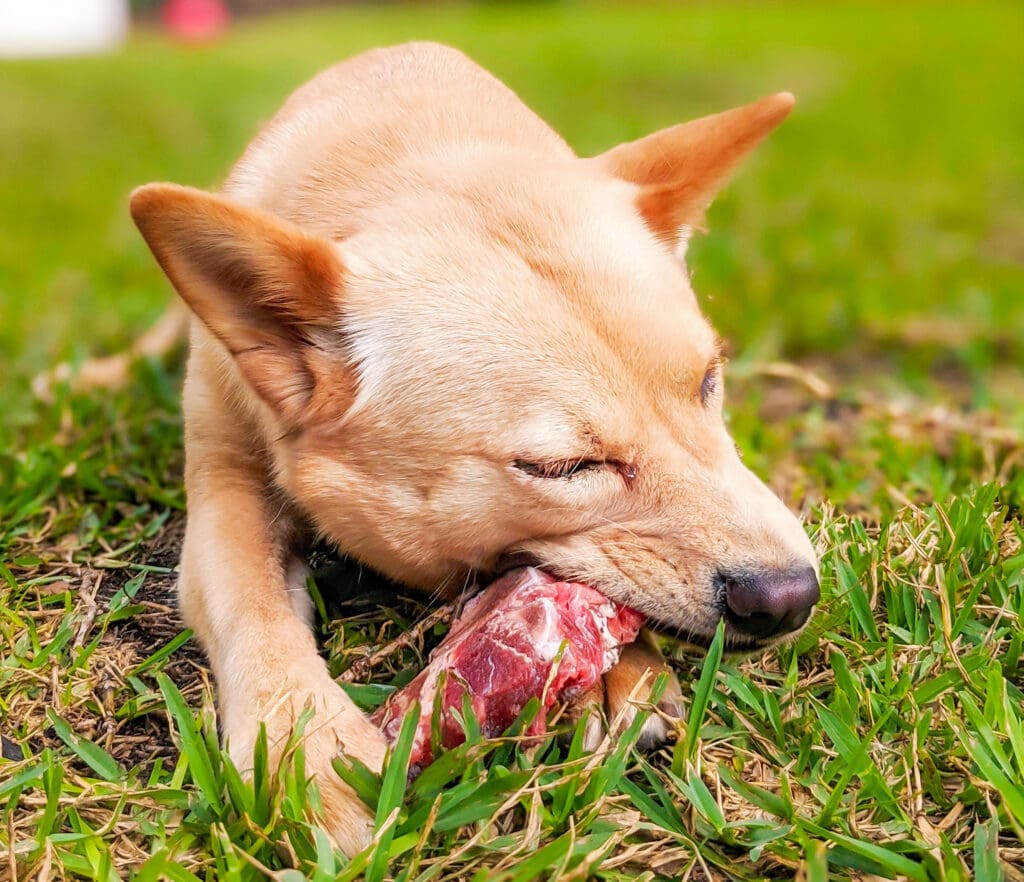

After feeding my dogs raw for over a year, I asked myself: is raw feeding for dogs worth it? For my dogs, the answer was no. Raw feeding for dogs takes a lot of time and money, and while we might be DINKs, we do have other things to do. Moreover, it was a lot of time and money without a big return; in other words, our dogs were not any healthier on a raw food diet than they were on a good quality kibble.
There was also the very real health concerns. I constantly worried if the dogs were getting a properly balanced diet. Any time one of the dogs had a runny poop, I worried they had salmonella poisoning. I worried about sourcing, about finding enough variety, and about transporting their raw food any time we traveled or went camping. All in all, it was a pretty big headache without any real benefit to make it “worth it.”
Raw feeding did not make my dogs any healthier
Fact: NONE of our dogs did significantly better on raw than they did on kibble. June’s allergies did not get any better or worse. Grandpa Totes’ mobility and energy levels did not change. Even when we switched back to kibble, we did not notice any sort of “decline.” We still get compliments on how soft and shiny the dogs’ coats are, and all of the dogs pass their annual vet exams with flying colors.
I’m not saying other dogs don’t experience notable benefits on a raw food diet, because the anecdotal evidence is there. Whether it’s allergies or food sensitivities or who knows what, some dogs definitely do significantly better on a raw food diet. I’m just saying that it didn’t make a difference for my dogs.
Raw Feeding is Time Consuming
In time, we did find a groove when meal prepping for the dogs. Yet, we still spent about 4 or 5 hours every other weekend shopping, prepping, and assembling meals for three dogs (we prepped two weeks at a time, the max amount we could store). An entire Saturday was dedicated to dog meal prep every other weekend.
Sourcing all of the ingredients was the hardest part. Not many places, including local butchers, carry secreting organs or edible bones like chicken feet, both of which are crucial parts of a raw food diet for dogs. Sometimes we had to visit up to three different places just to get everything we needed. Then, there was soaking and grinding the seeds; steaming and blending the vegetables; weighing out all of the ingredients and preparing each day’s food. Storage was another issue, both for the prepped meals and the leftover ingredients. We had to buy special tubs, even an entire deep freeze just to have enough space!
In all honesty, we didn’t realize how much this commitment weighed on us until we switched back to kibble. Suddenly, we had so much more time to do other things, like take the dogs on a hike. The time and energy may not be a problem for everyone, but it was defiitely too much for us.
I was constantly worried when feeding my dogs raw
Things I worried about when feeding our dogs raw:
- What if we could not find an ingredient like liver, secreting organs, or edible bone?
- Will the cooler keep the dog meals frozen while traveling?
- Always feeding outdoors to avoid contamination on floors, rugs, etc.
- Were the dog’s mouths/paws contaminated with bacteria after eating?
- Rearranging our schedule if we traveled on a food prep weekend.
- Contamination, contamination, contamination.
- Were we feeding enough variety?
- Was our raw food diet appropriately balanced?
- Did we remember to thaw a meal for the day?
- Explaining how to feed the dogs to our pet sitter.
Honestly, the list could go on. Feeding a raw food diet for dogs is not flexible, and the less rigid you are about it, the higher your chances of contamination– whether that’s contamination of the food, your floors, your backyard, etc.
What about commercial raw?
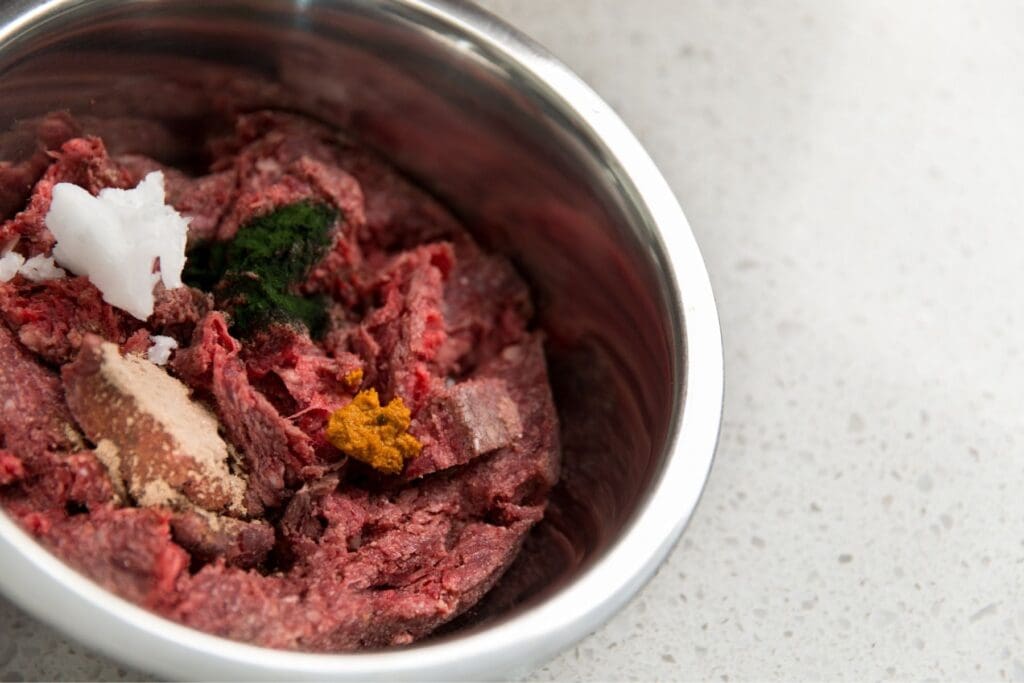

There are many reasons we decided to not go with commercial raw. For one, commercial raw dog foods are extremely expensive, especially for three dogs. Secondly, a lot of these diets are not prepared or even approved by qualified veterinarian nutritionists, and many are not AAFCO certified (AAFCO certified indicates a food is complete and balanced nutritionally for a dog’s particular stage of life). Essentially, because the pet food industry is highly unregulated, many commercial raw dog foods may not be as nutritionally balanced as we are led to believe
Secondly, while commercial raw dog foods are very expensive and tout the same benefits as a raw food diet, there is actually very little evidence to back this up beyond people’s personal experiences. While I’m not discounting anecdotal evidence, I do think it’s important to recognize the “wild west” that is the pet food industry. Many of these brands present the same problems as homemade raw, including contamination risks and concerns about whether or not a diet is properly balanced.
Is Raw Feeding for Dogs Worth it?
In a nutshell, raw feeding your dog requires a lot of money, time, and effort. While this might be worth it for people who see a notable improvement in their dog’s health and quality of life, it is not necessarily worth it for all pet parents. Both the benefits of raw food and the downsides of kibble have been grossly overexaggerated.
That said, I absolutely believe in the power of quality nutrition, and choosing the right dog food is a crucial part of your dog’s overall health and well being. Adding fresh foods into your dog’s diet is a great way to ensure your pup gets plenty of vitamins, minerals, and antioxidants. However, many pet parents can take advantage of the power of fresh foods without switching entirely to raw.
What do you think? I’d love to hear your thoughts and experiences in the comments!



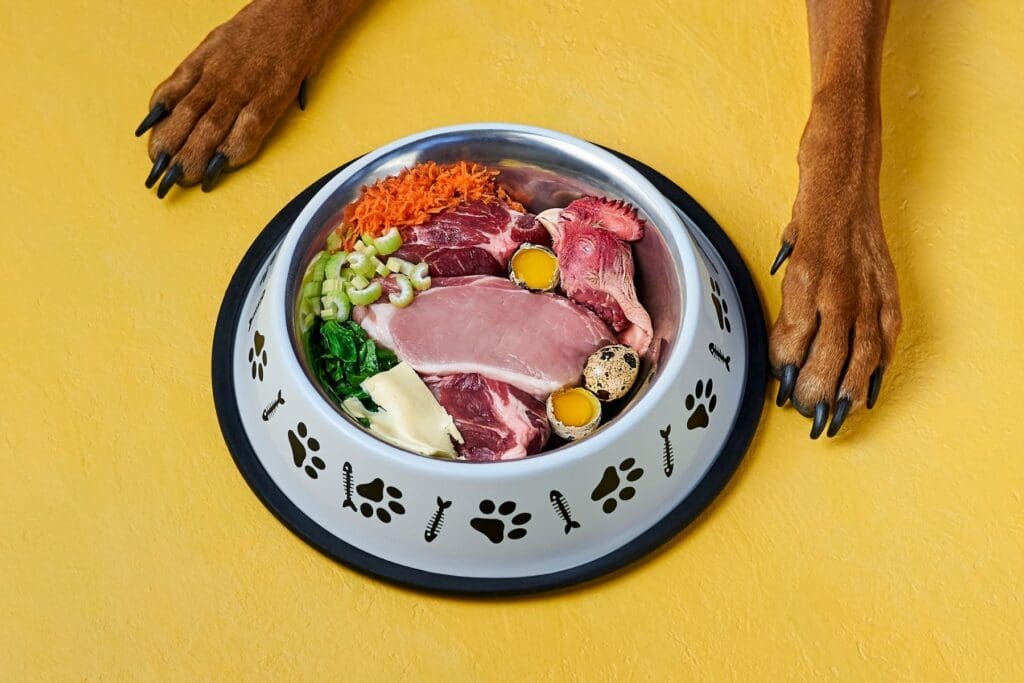
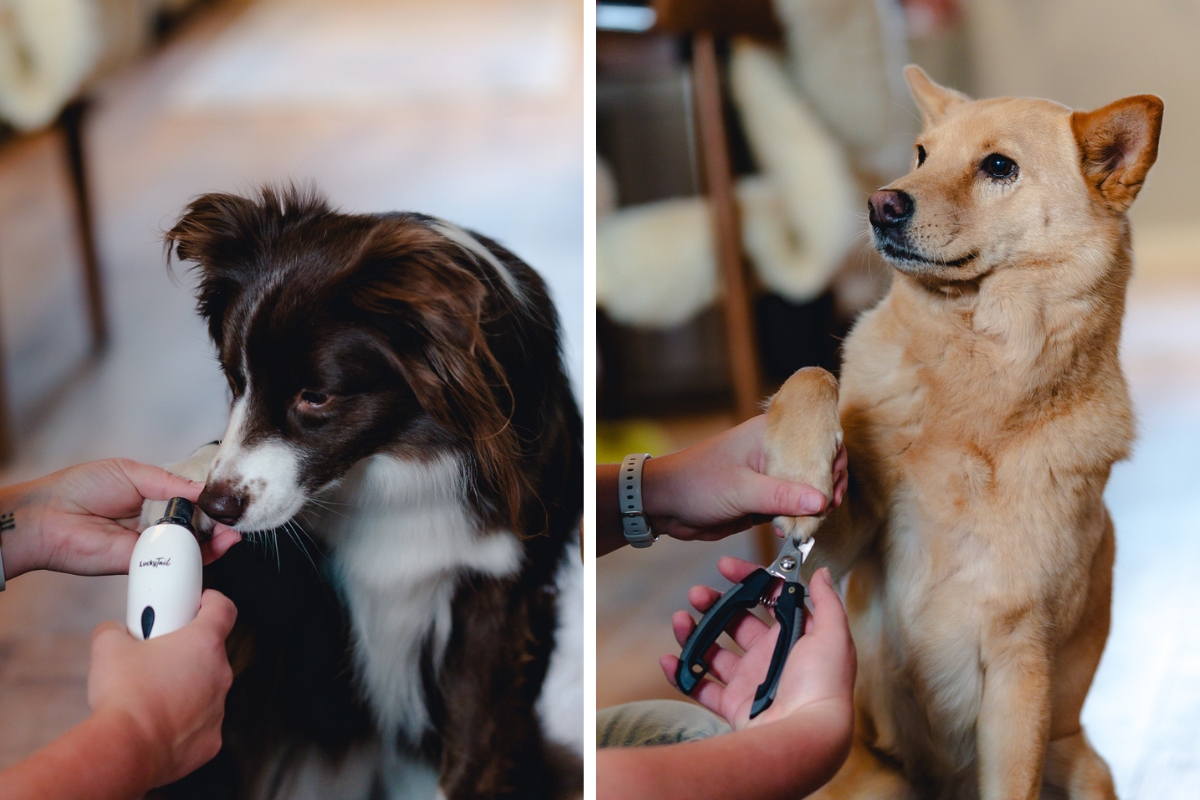
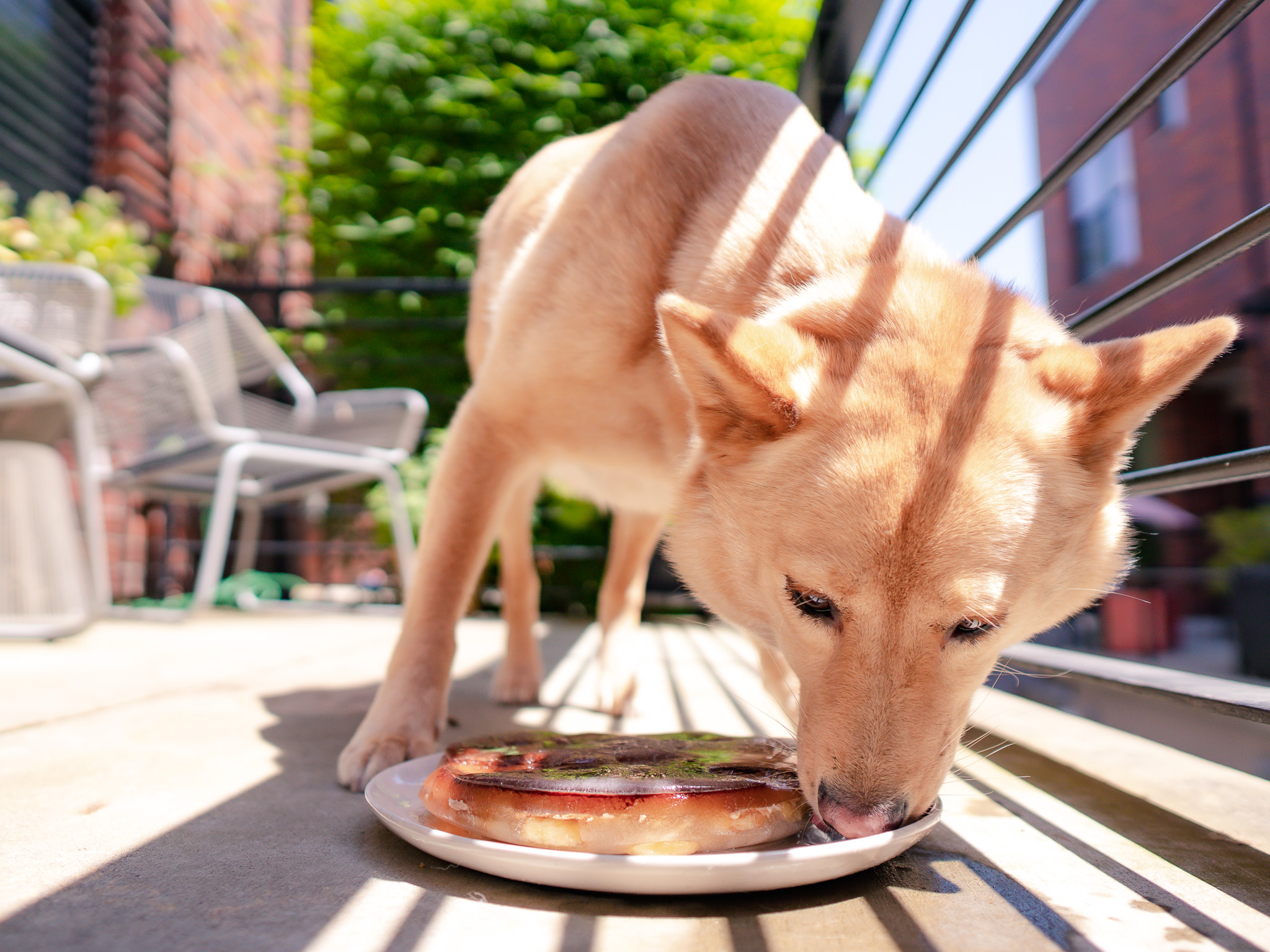
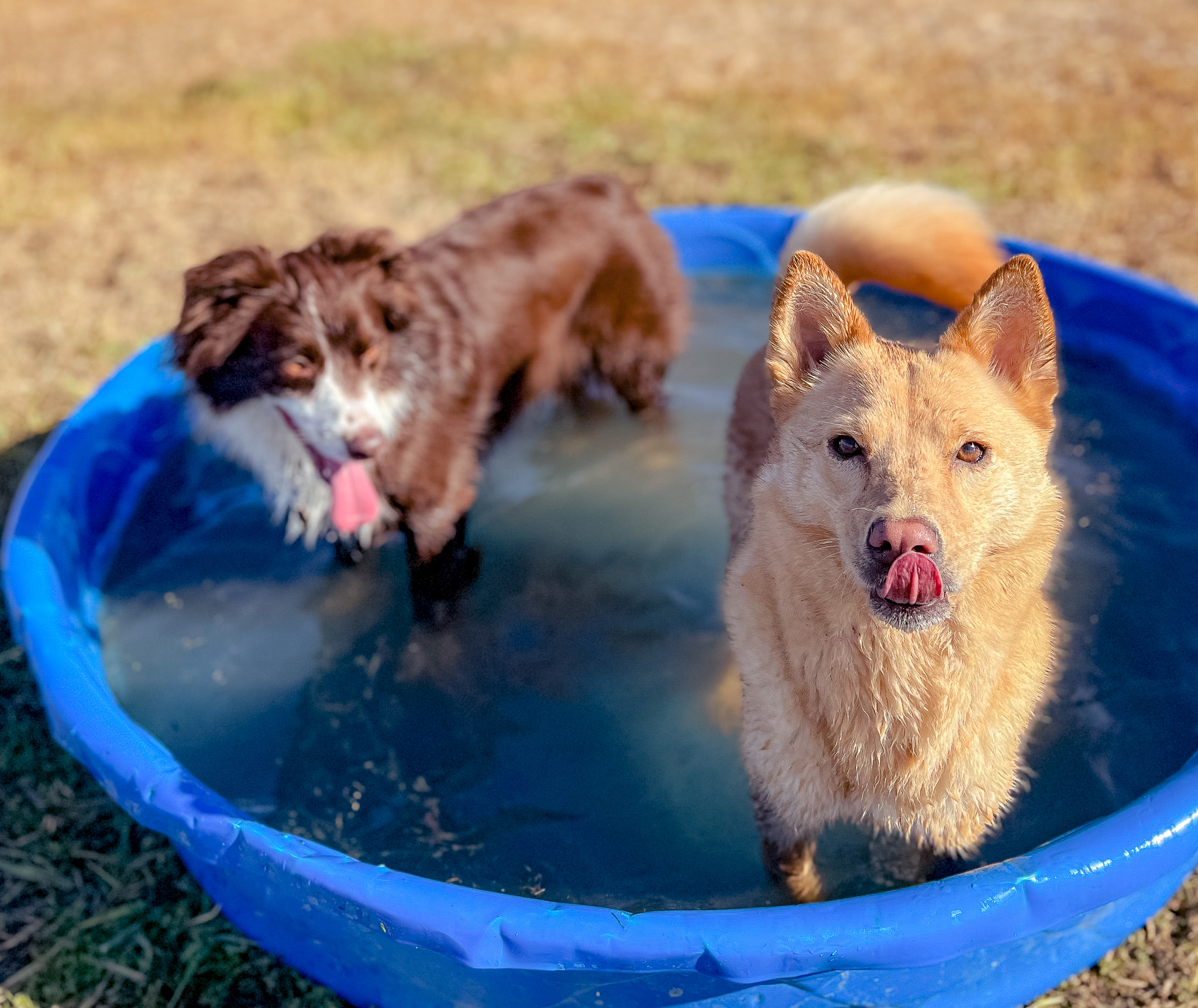

18 Responses
Wow I mean wow!! Your article is just what I needed. I have two Newfoundlands, my male I started raw feeding at about a year old, female was 8 weeks. My male has never had a super shiny coat and his skin has always been dry. My female has been dealing with severe, severe allergies and almost total loss of fur for two years.
Everything I was told about raw feeding has not shown true. Cost.. yup I said the same thing. NOPE 1000% more money and I was still at the vet. Coat?? Nope not better.
My females litter mates are all healthy while I battle skin issues, only difference is she’s raw fed.
She’s now on a hydrolyzed kibble and my male on one for skin issues.. guess what? They both look great!
And for those who say try novel protein for allergies, I did that. Spending 10-12$ a lb on food!!! And it didn’t help nor did they care to eat it.
I tried premade raw, and do it myself which required so much just to get them to eat the organs. I read ALL the books to include Dr Judy Morgan and tried the hot vs cold proteins.. no change. I feel as though I’ve been duped and I have even caused the health issues of my female. Dr Lonesdale is the worst as I followed his just need RMB diet first.
Everything you wrote confirmed what I’ve been thinking. YOU are just the first I’ve read to say or out loud!
Thank you!
Hey, Nora! Thank you so much for sharing your experience! I’m glad this post was affirming for you. It can be very frusrating as a dog mom to navigate the volume of misinformation out there, especially around diet. It doesn’t help that everyone feels like they are out to shame you for your choices! So glad your pups are doing better on their kibble diets :).
My latest pup came eating raw and there was a lot of pressure to have all mine on it. She was constantly having loose stools, her whole very long-furred face went in the bowl so chances are any pathogens would have stuck to them and it was just a very expensive inflexible faff! All my dogs have reached their late teens with no allergies or chronic diseases on kibble and once I swapped her to it all her stomach issues calmed down.
I look at the pictures of people proudly showing dishes of prime cut meat and fish with julienne of vegetables and an organic egg and their claims that this is what they would have eaten in the wild and wonder if they realise dogs are scavengers, not prolific hunters. Your pug would not be eating bison in two carefully portioned meals a day! Unlike wolves they have the ability to process carbohydrates and since dogs became domesticated at the same time as humans started farming there is a good chance that their diet contained grains.
So no, I will not be risking adding to the problem of antibiotic resistant bacteria, which is already killing people, without an awful lot more evidence. What I’m doing has been working for 45 years so I’m in no hurry to change.
Much of raw feeding is very much backed up by anecdotal evidence which has its place, but is far from concrete!
Hi, I fed a raw diet from a local producer for 3 months, followed their guidance on food prep and she developed a deep seated gastrointestinal infection which culminated in her becoming an inpatient at our vet for two days and me then hand feeding her back to health – she refused to eat. I do not know if it was the raw food diet or dietary indiscretion but there was no blockage present (she had scans) but it has really put me off feeding raw again – I have her on a high quality kibble for at least a month (on my vets advice) and then I can move her back on it or I may do a kibble/home cooked hybrid – which will at least provide flexibility when we are travelling or I need to leave her with my family member. My gut feeling was that it was something to do with the raw food and due to her also being in season at the time she got sick – she may have suffered some immuno suppression due to the season. I feel you have to do what you feel is right for your dog and not feel guilty – I actually felt guilty putting her back on kibble! It’s almost akin to breast feeding in terms of the guilt trip I’m feeling (and I breast fed five kids – but had to stop feeding my last one due to breast surgery 😭). I felt awful! We just want the happiest healthiest dogs – don’t feel guilty or bad about feeding decisions x
Yes! I whole-heartedly agree with this!
We have a 12yr old black lab and a 12yr old minipinser. We rescued them together from the pound. Geordie the black lab (6 months old) was in a mess (bare patches and ticks and fleas) He was separated (alone in a separate shed) because of his condition. Anyway he was taken home and given tick injections until the commercial tick and flea and worm products appeared on the shelf. I could do a Phd on dog food. He has always been on Big Dog Raw Patties. Then he got sick, huge poos, sick and his smell could evacuate the street. Soooo we started the long journey of diet. Tried everything even GOAT. Lately hes been on Raw turkey mince human grade from Woolies. Brought it all up yesterday. No more raw, I think he has become intolerant of raw perhaps as he is aging, Boiled rice up. Gave him rice water. Small amount of rice mixed with natural yogurt. He is an English lab so is smaller and leaner than the American breed. We are keeping our fingers crossed. I would love to put him on kibble but I do not trust the manufacturers to tell the truth about what goes in kibble.
The minipinser is on Royal Canin wet and dry. Never had a problem.
Geordie is a shovel mouth. If we dont watch him he will clean up the sports field he runs around twice a day including dogs poo.
I wish I trusted the experts but I dont. We will continue with the rice and hope it only get better.
Hey there! I’m sorry to hear about the struggles with your lab. Trying to find the root cause of digestive issues can definitely be a struggle. First and foremost, I would definitely chat with your vet to rule out any undercausing issues like pancreatitis, parasites, etc. I would also be cautious about feeding just rice, or even a bland mix of chicken and rice, because that can cause severe nutritional deficiencies. I’m curious to learn why you don’t trust kibble manufacturers, but you trust raw food manufacturers? I think both types of companies are equally likely to use deceptive marketing to sell their products. I’m unsure if you are looking for recommendations, but maybe take a look at JustFoodForDogs. They have a lot of science behind their recipes, and they even make prescription lines for some conditions. Hoping Geordie feels better soon!
All good here. Everyone wants the reports of the long term studies to provide proof. Did anyone want the long term studies reports for covid vaccines? I hope not as there were none. Remember when eggs were good, then bad then back to good? Even if you got the “proof” you want, what makes you sure it is correct? Pets have been treated horribly in the past (killed on movies, experimented on, etc) . Sadly in our world the thing that matters most is $$. Who pays for this research you all demand? The only way to do the right thing is to look into your own heart and soul. We want the best for our pets. All we can do is the best we can do. My best is different from his best, from yor best, from …well you get the picture. Is my best the way? I have no idea. But I will listen to it all and believe some of it and believe some of it to be just b.s. Proof depends on where it came from. Everyone seems to be asking for proof. I am so confused on learning about raw feeding or fresh cooking or whatever it is called that it is so overwhelming. Shaming anyone for doing what they do is unexceptable. I believe kibble is horrible. Raw has dangers in many forms. I won’t give up looking for what is best. The more I know the better I will do. There is no easy answer. More cooked foods takes out the nutrition. That I believe. Raw if not clean and balanced is not good either. I’m old and forgot my point. Maybe it was you are all wrong or you all are right.
Hi, Kathy. I think it’s reasonable to want data-driven conclusions while recognizing the limits inherent in the system. Thanks for sharing your thoughts!
I am more confused than ever! Raw or kibble? Pros and cons. I tried cooking her food but her stool got soft. Kibble has many additives to lengthen shelf life. Very gross. Even the more expensive kibble. She has problem expressing anal glands and sensitive digestion. Not sure what road to go on.
It is definitely not clear cut, and there is not a “one-size-fits-all” solution– which can be really frustrating, haha. Personally, my dogs have done really well on fresh food. Currently we feet Pet Plate, but JustFoodForDogs is really great, too! If you are interested in cooking your dog’s food/troubleshooting the soft stool issue, or you just want to learn more about the nuances of dog nutrition, I highly recommend checking out https://thecaninehealthnut.com/! Nikki is a RVN who specializes in canine nutrition, and she offers balanced recipes and 1:1 consultations. I hope this helps!
Was looking into switching our dogs to a raw diet but have had a hard time finding a non-biased science-based take on kibble vs commercial raw vs homemade raw diets for dogs. I work in the animal health research industry; with the knowledge I have, I don’t necessarily worry about my dogs or I getting sick from pathogens because of how I would plan to prepare meals and keep things as asceptic as possible, but the fact that they could be asymptomatic carriers of antibiotic-resistant bacteria or other zoonotic pathogens and pass those in their feces into the environment makes me hesitant. I appreciate your take on the matter and how you mentioned multiple times that raw feeding just isn’t for you and your dogs because there was no visible improvement in your dogs health even though some owners may find that raw feeding is beneficial for their dogs. We have very little to no long-term research studies that compare raw vs kibble diets for dogs that measure clinical factors such as immune function, skin/coat, digestion, longevity, etc that it is tough for me as a researcher to make the switch. Just looking into sourcing the items I would need for my dogs diet in my neck of the woods – I would have a tough time sourcing everything I would need and it would be incredibly expensive and time consuming as you mentioned. I also appreciate your comments about being open for a discussion as long as it is rooted in science and hard data. I don’t think i’m completely sold on switching to a raw diet but would like a higher quality food for my dogs – do you have any recommendations on high quality kibble? I have done plenty of research but there are so many options out there. Bonus points if the kibble is a bit larger – I want to keep my dogs teeth in good shape. Thank you!
Hey, Callie! 100% to everything you are saying here. There just isn’t a ton of good research out there showing clear benefits one way or the other, and it doesn’t help that dogs are individuals and their needs can vary. We’ve since switched to a fresh food diet, which offers the benefits of raw (fresh, whole foods) without the downsides (like contamination risks, sourcing, etc). JustFoodForDogs is a great place to start, and they actually have a decent amount of research on their diets, including digestibility studies and AAFCO feeding trials. JustFoodForDogs can be ordered online via their website or Chewy, and can also be found in some PetCo stores. I also really like PetPlate, which is a little more affordable, but only available on a subscription service. That’s what we are feeding currently, and my dogs are doing really well on it. If you want to really dive into dog nutrition, check out The Canine Health Nut. She is a vet tech who focuses on pet nutrition and is an incredible resource for data-driven information!
Disagree 100%. Kibble came about when people started to not have time or money to feed their dogs a real meal. Therefore, companies capitalized on that and with a massive marketing push for kibble, people started to get brainwashed by it. Vets are paid by huge corporations to market kibble and that is taught in vet schools. That’s why there are holistic vets that challenge the idea that kibble is not OK.
I challenge you to eat protein bars for the rest of your life. You wouldn’t thrive.
Hi there! I would actually argue that prior to kibble, people were not feeding dogs “real meals” so much as scraps. Certainly I would be skeptical that people were feeding nutrionally balanced meals to their dogs prior to kibble. I also disagree that vets are categorically “paid off” by kibble brands. Could you provide a reliable source that supports this claim? In my experience, there are plenty of vets out there looking critically at nutrition and the role it plays in our dog’s health. Feeding raw meat is expensive and carries a high risk for foodborne illness and nutritional deficiencies (if not properly balanced, of course). I do think fresh foods are more nutritional and offer better bioavailability and digestibility than kibble, but at the end of the day we have to look at an individual dog’s needs and how an owner can best meet those needs based on finances, time, geographic location, and so on.
Who were the ancestors of our pet dogs? They didn’t eat kibble. Humans domesticated dogs. And wanted a more convenient way to feed dogs so they can spend less on the dogs and more on themselves. Don’t be brainwashed by big pet brands and million dollar marketing campaigns.
Hi there! I get it, I used to think this made the most sense, too. However, the “ancestor” argument actually has no relation to this topic. It’s a red herring. Dogs are not wolves, and humans domesticated dogs approximately 30,000 years ago. If we look at a dog’s wild counterpart, the wild dog, we can see they are opportunistic eaters– they will eat whatever they can scavange. They are not carnivores. I wholeheartedly support feeding variety, and feeding fresh or adding fresh foods to a dog’s diet! However, there is simply not enough data to support raw feeding or indicate the benefits outweigh the risks. That doesn’t mean it isn’t true, we just don’t have the studies for it at this time. What we DO have science for is the very real risk of raw feeding, from nutritional imbalances to contamination concerns. I welcome more discussion on the topic, but I would appreciate a discussion rooted in science and hard data rather than conjecture and opinion. If you have scientific studies backing up your claims, I would love to read them! Please email them to blair@thedinkdogmom.com.